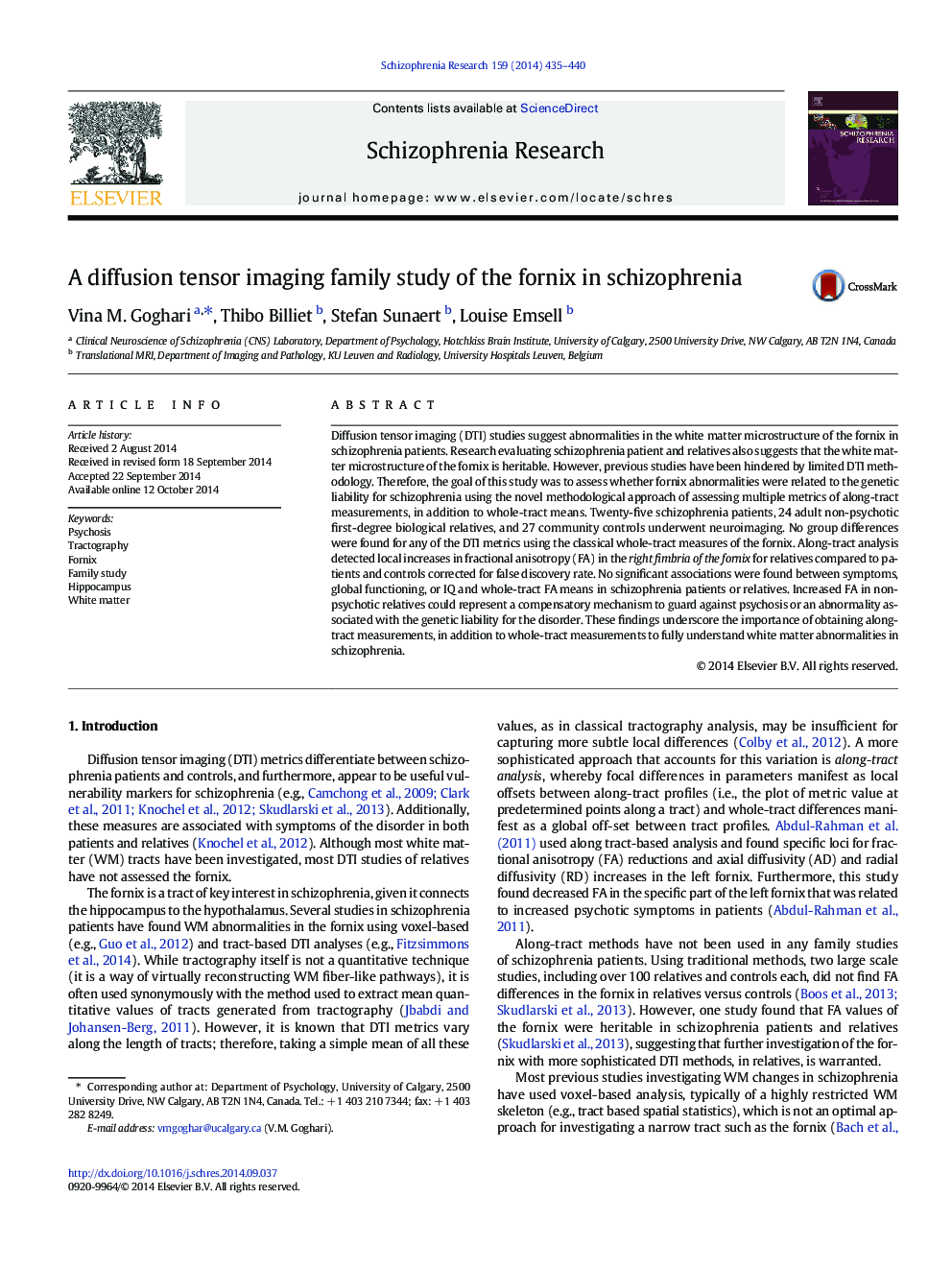| Article ID | Journal | Published Year | Pages | File Type |
|---|---|---|---|---|
| 6824760 | Schizophrenia Research | 2014 | 6 Pages |
Abstract
Diffusion tensor imaging (DTI) studies suggest abnormalities in the white matter microstructure of the fornix in schizophrenia patients. Research evaluating schizophrenia patient and relatives also suggests that the white matter microstructure of the fornix is heritable. However, previous studies have been hindered by limited DTI methodology. Therefore, the goal of this study was to assess whether fornix abnormalities were related to the genetic liability for schizophrenia using the novel methodological approach of assessing multiple metrics of along-tract measurements, in addition to whole-tract means. Twenty-five schizophrenia patients, 24 adult non-psychotic first-degree biological relatives, and 27 community controls underwent neuroimaging. No group differences were found for any of the DTI metrics using the classical whole-tract measures of the fornix. Along-tract analysis detected local increases in fractional anisotropy (FA) in the right fimbria of the fornix for relatives compared to patients and controls corrected for false discovery rate. No significant associations were found between symptoms, global functioning, or IQ and whole-tract FA means in schizophrenia patients or relatives. Increased FA in non-psychotic relatives could represent a compensatory mechanism to guard against psychosis or an abnormality associated with the genetic liability for the disorder. These findings underscore the importance of obtaining along-tract measurements, in addition to whole-tract measurements to fully understand white matter abnormalities in schizophrenia.
Related Topics
Life Sciences
Neuroscience
Behavioral Neuroscience
Authors
Vina M. Goghari, Thibo Billiet, Stefan Sunaert, Louise Emsell,
